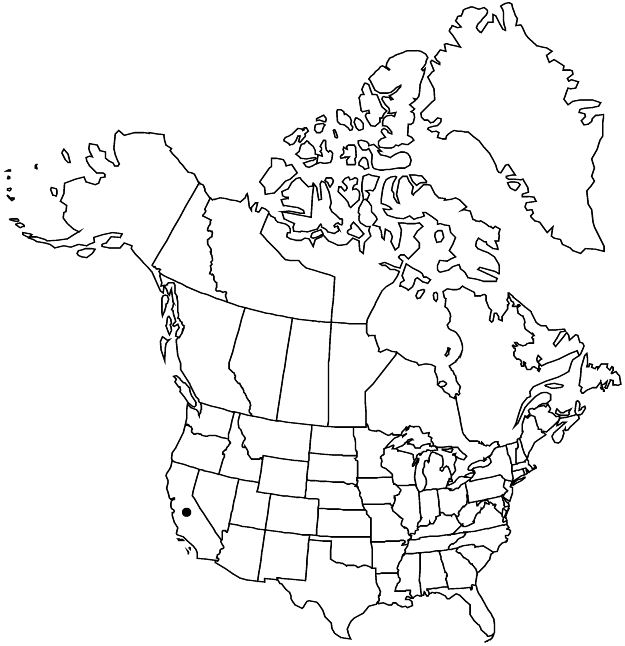Difference between revisions of "Ceanothus hearstiorum"
Four Seasons 2(1): 4. 1966.
FNA>Volume Importer |
FNA>Volume Importer |
||
| Line 31: | Line 31: | ||
|elevation=20–200 m. | |elevation=20–200 m. | ||
|distribution=Calif. | |distribution=Calif. | ||
| − | |discussion=<p>Ceanothus hearstiorum occurs in a small area of coastal bluffs in northern San Luis Obispo County, growing in close proximity to another local endemic, C. maritimus (subg. Cerastes).</p> | + | |discussion=<p><i>Ceanothus hearstiorum</i> occurs in a small area of coastal bluffs in northern San Luis Obispo County, growing in close proximity to another local endemic, <i>C. maritimus</i> (subg. Cerastes).</p> |
|tables= | |tables= | ||
|references= | |references= | ||
| Line 55: | Line 55: | ||
|publication year=1966 | |publication year=1966 | ||
|special status=Endemic;Conservation concern | |special status=Endemic;Conservation concern | ||
| − | |source xml=https://jpend@bitbucket.org/aafc-mbb/fna-data-curation.git/src/ | + | |source xml=https://jpend@bitbucket.org/aafc-mbb/fna-data-curation.git/src/8f726806613d60c220dc4493de13607dd3150896/coarse_grained_fna_xml/V12/V12_813.xml |
|genus=Ceanothus | |genus=Ceanothus | ||
|subgenus=Ceanothus subg. Ceanothus | |subgenus=Ceanothus subg. Ceanothus | ||
Revision as of 14:50, 18 September 2019
Shrubs, evergreen, 0.1–0.3 m, matlike or moundlike. Stems spreading or prostrate, not rooting at nodes, some flowering branches ascending; branchlets green to reddish brown, not thorn-tipped, round or slightly angled in cross section, flexible, densely puberulent. Leaves: petiole 1–2 mm; blade flat to cupped, linear, oblong, or oblong-obovate, 8–20 × 2–10 mm, base cuneate to obtuse, margins entire or obscurely glandular-denticulate, weakly revolute, glands 23–31, apex truncate or retuse, abaxial surface green, densely tomentulose, adaxial surface dark green, glandular-papillate and sometimes villosulous; pinnately veined, veins ± furrowed. Inflorescences terminal or axillary, umbel-like or racemelike, 1–5 cm. Flowers: sepals, petals, and nectary deep blue. Capsules 4–5 mm wide, not lobed to weakly lobed; valves smooth, not crested.
Phenology: Flowering Mar–Apr.
Habitat: Consolidated alluvial or serpentine soils, maritime chaparral, coastal prairies.
Elevation: 20–200 m.
Discussion
Ceanothus hearstiorum occurs in a small area of coastal bluffs in northern San Luis Obispo County, growing in close proximity to another local endemic, C. maritimus (subg. Cerastes).
Selected References
None.
